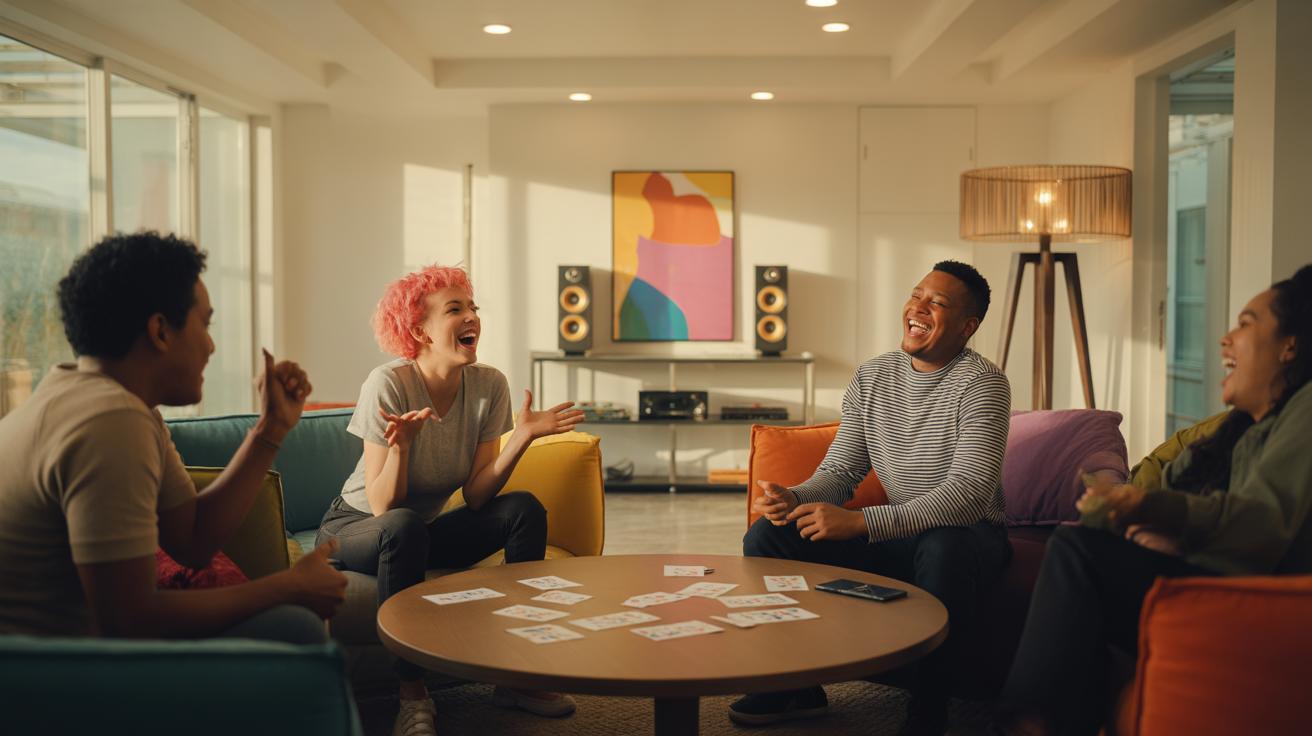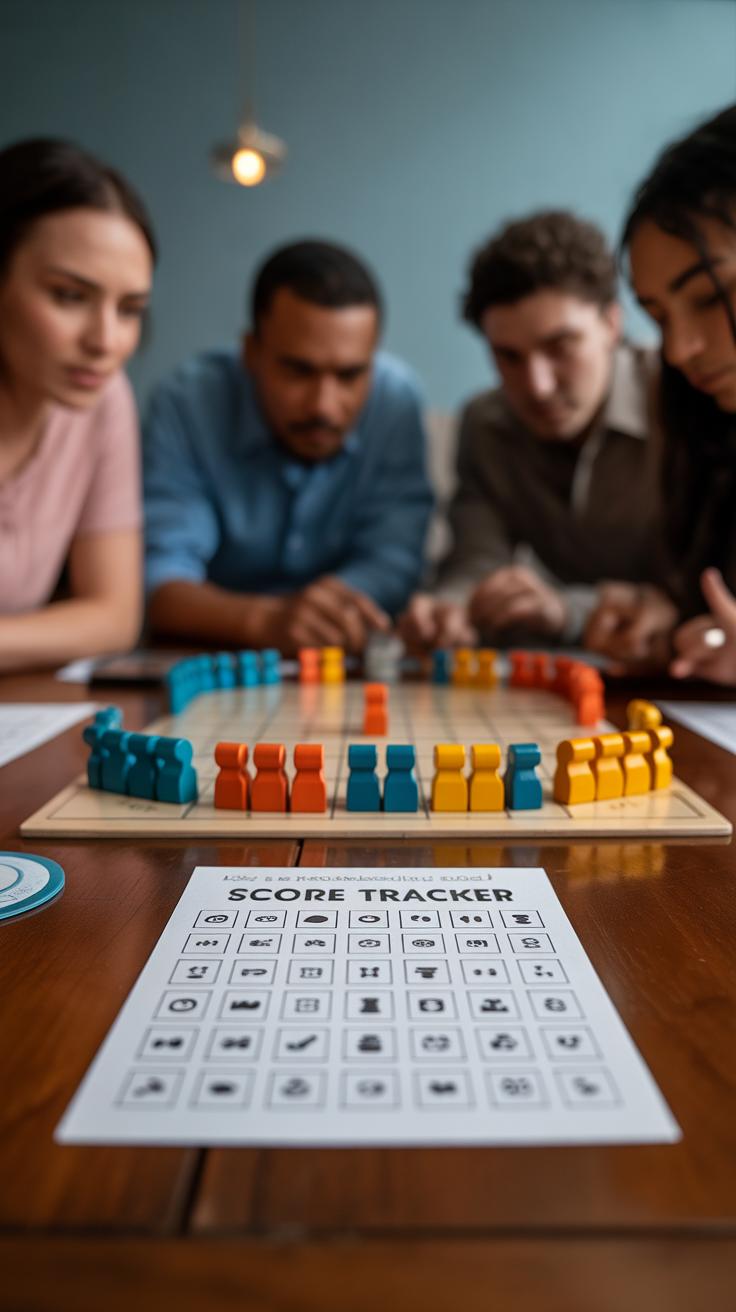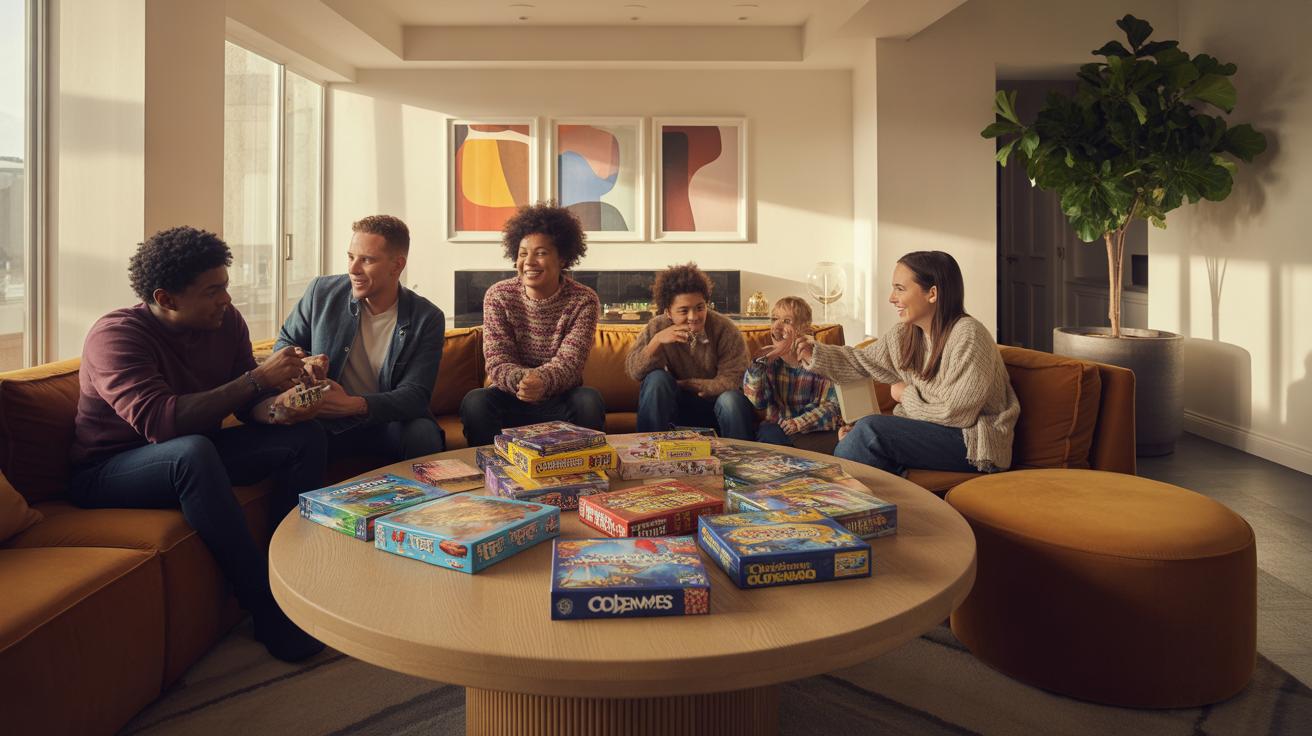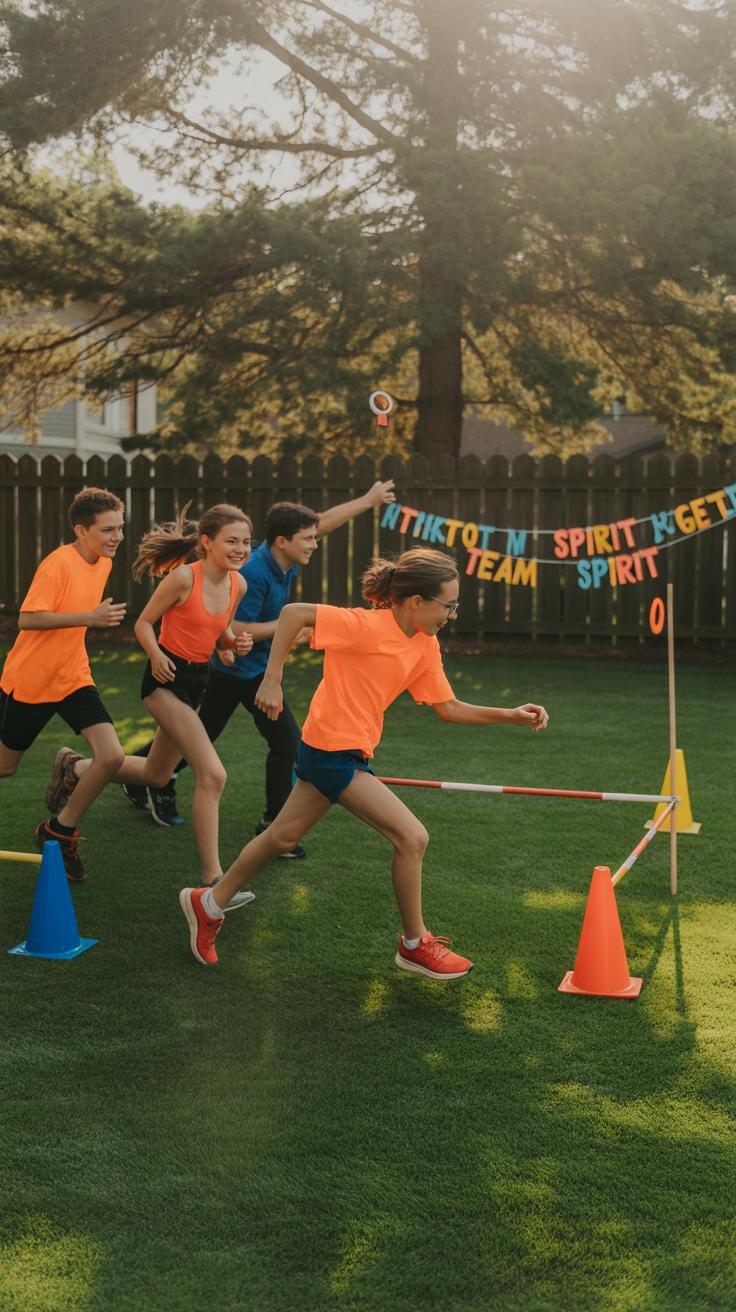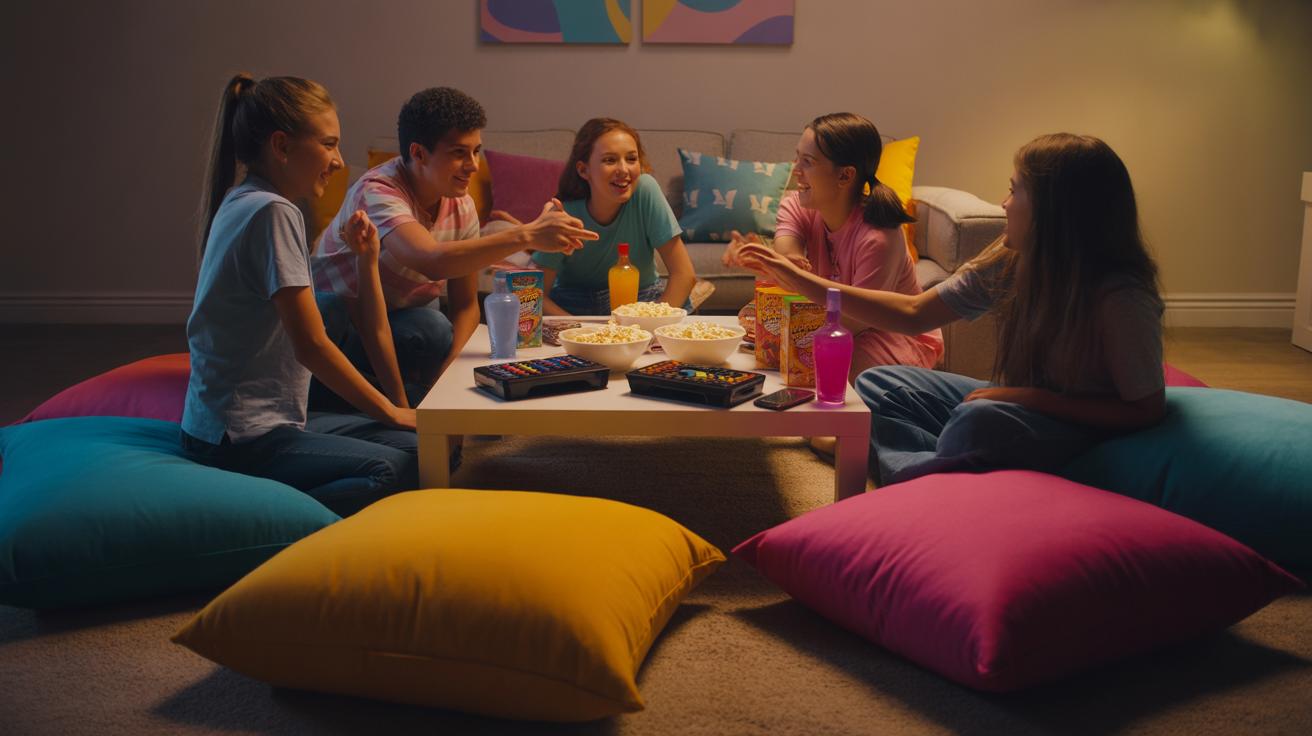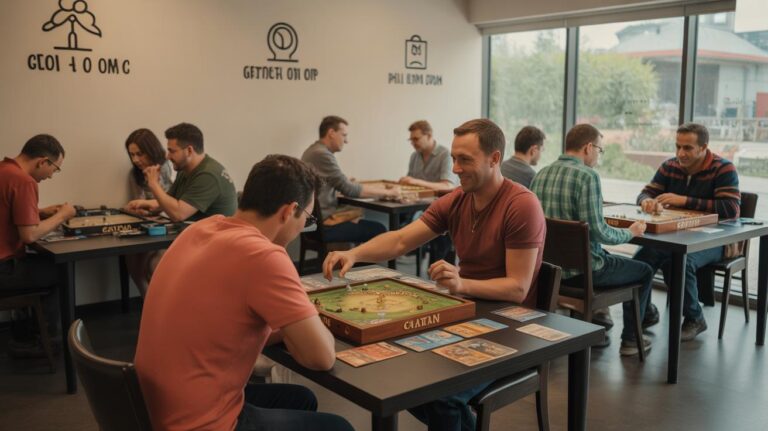Introduction
Fun party games are key to creating lively and enjoyable gatherings for adults and teens alike. Whether you’re planning a casual get-together or a special event, the right games can encourage socializing and laughter. This article explores various types of party games designed to fit different group sizes and interests, making your party memorable.
You will find simple explanations and examples for games that work well indoors and outdoors, require little to no equipment, and involve everyone. From team-based challenges to role-playing activities, the ideas here will help you pick games that everyone can easily join and enjoy.
Understanding What Makes a Good Party Game
Not every game fits well at a party where adults and teens gather. The best ones usually have simple rules—you don’t want to spend half the time explaining how to play or reading a manual. When the rules are clear and quick to grasp, everyone can jump in without feeling lost or left out. That’s a big part of keeping the energy alive.
Wide participation matters a lot. Games that get everyone involved tend to be more memorable and enjoyable. Imagine a game where half the group sits out waiting—it dulls the mood. So games that encourage everyone to take part or at least stay connected boost the social vibe, often sparking laughter or shared stories.
Social interaction is another huge factor. The best party games don’t just entertain; they get people talking, teasing, maybe even collaborating or competing in ways that feel lively but friendly. Sometimes a game is less about winning and more about the connections it stirs up. I think that’s why people often remember these moments for longer than the scores themselves.
Games That Include Everyone
Player elimination can be a real party killer. When someone’s booted out early, they risk feeling like a spectator instead of part of the crowd. That quiet spot on the sidelines can stretch out longer than expected, changing the whole mood. Games designed to keep everyone playing or at least involved help maintain energy and keep people smiling.
It’s a bit like having everyone at the table, no one stuck waiting or watching too much. That ongoing participation means more interaction, more chances for jokes or unexpected moments. Even those who aren’t winning are still in on the fun, which somehow makes the whole experience more inclusive and less stressful.
Balancing Skill and Luck
Some games rely entirely on skill, which can be daunting or discouraging for those who don’t feel confident. Others lean on luck, which might feel random but can level the playing field. Mixing both skill and chance keeps things interesting and fair. Players feel engaged because they have some control, but no one gets crushed by expertise alone.
I’ve seen this mix lead to surprising outcomes—someone less “skilled” ends up on top thanks to a lucky break or clever move. That unpredictability keeps everyone alert and rooting for one another. Plus, it means your less competitive friends—and yes, even the fiercely competitive ones—stick around longer because the game feels balanced, not unfair or dull.
Classic Indoor Games Everyone Can Enjoy
Charades is one of those timeless games that gets people moving and laughing without needing much setup. The basic idea is pretty simple: a player acts out a word or phrase silently, while the rest of the group guesses what it is. You can set categories or themes—movies, books, songs—to keep it interesting. The rules are straightforward, but the unpredictability of the acting makes it fun. Watching someone try to mime “spaghetti western” or “walking a tightrope” usually breaks the ice pretty quickly.
Then there’s Pictionary, a drawing and guessing game where one person sketches clues while others shout out guesses. You don’t need to be an artist to enjoy it—sometimes the worst drawings are the funniest. What makes Pictionary great is the mix of creativity and teamwork. People naturally bond trying to interpret each other’s drawings, even if the sketch looks more like a squiggly mess than the actual word.
Trivia games also fit here because they suit groups well and can be tailored to your crowd’s interests. Putting together questions about movies, music, or history can spark competition without pressure. Plus, when someone surprises everyone with an unexpected answer, it kind of levels the playing field.
These games are great because they invite everyone to join in, no matter their skill level or personality type. Do you find yourself more comfortable acting or drawing? Maybe you’re the trivia buff. No matter which, classic indoor games usually bring a mix that keeps the whole group engaged and entertained.
Outdoor Party Games for Active Groups
Outdoor games bring a fresh vibe to any gathering, especially when guests want to move around and have some fun together. Simple games like relay races are surprisingly effective at getting a group energized. Break everyone into teams, set clear start and endpoints, and watch the energy build as each player sprints or balances an object to the next.
Red light/Green light is another classic that’s easy to set up and works well with teens and adults. It’s about quick reactions and surprises, creating laughs and playful competition. You don’t need much—just someone to call out the signals and a clear space to run.
Simple team challenges, like sack races or egg-and-spoon contests, push everyone to work together while still having a blast. These games don’t demand athletic skill, just a bit of coordination and good spirit. They tend to dissolve social barriers, which can be refreshing for mixed groups.
Physical Movement and Social Play
Games that get players moving tend to mix physical activity with social interaction, which usually keeps the mood light and inclusive. Think tug-of-war or frisbee toss—actions that pull people out of their shells, prompting smiles and some friendly teasing.
By combining movement with social play, these games help break any initial awkwardness. You might catch someone who’s usually quiet really getting into the competition. Not every game demands high energy; some games, like capture the flag, require strategy and teamwork just as much as running.
Adapting Games for Different Ages
One challenge with outdoor games is balancing the varied ages and physical abilities within a group. It’s not always easy, but adjustments really help. For instance, you might shorten a course for younger players or let them walk instead of run in relay races.
Changing rules slightly—like using a larger, softer ball or lengthening the time for a participant to complete a task—lets everyone join without feeling left out. Even switching to more cooperative formats rather than competitive ones can keep the mood light and ensure no one feels pressured.
Have you tried adapting a game on the fly? Sometimes it’s those small changes that keep the whole group smiling and moving, which is really the point, isn’t it?
Games That Build Team Spirit
Team-based games like Cranium and Werewolf are great for bringing people together. They require collaboration, making you rely on others while sharing the fun. It’s interesting to see how quickly groups bond when they have a common goal—whether it’s guessing a word or uncovering a hidden traitor.
Cooperative challenges also do this well. These games often throw a problem at the group that only works out when everyone contributes. That sense of “we’re all in this together” can turn strangers into fast friends, or deepen existing connections. I’ve noticed teams tend to crack jokes and cheer each other on more in such settings.
Teamwork in Party Games
Working as a team naturally builds communication and trust—things you don’t often get from solo games. When you’re in it together, you share responsibility, celebrate wins, and sometimes laugh off losses. All those moments create memories beyond just the game itself.
Plus, teamwork usually encourages quieter players to speak up and others to listen. That balance can bring out surprising skills and personalities. In one game of Cranium, I recall someone who almost never talks suddenly taking charge in the drawing round—and everyone ended up loving that.
Balancing Competition and Cooperation
There’s a fine line between keeping games competitive enough to be engaging and making sure they don’t get tense. Friendly rivalry can boost excitement—but it’s teamwork that keeps things lighthearted. When everyone knows the goal is fun first, winning becomes a shared victory rather than a divide.
Some groups may struggle with competitiveness, but blending cooperation into the mix often smooths things out. Think about Werewolf—players compete to survive, but must also listen carefully, guess wisely, and cooperate within their team. It’s a tricky balance, but that’s what keeps the energy high without hurting feelings.
RolePlaying and Interactive Story Games
How Role-Playing Engages Players
Role-playing games invite you to step into someone else’s shoes, and that’s part of their charm. You become a character, with motives and quirks that might be quite different from your own. This taps into creativity in a way many other games don’t. You’re not just following rules – you’re improvising, reacting, and sometimes even bluffing.
What’s more, these games often spark conversations and laughter, bringing people closer. When you act out a role, you share an experience that feels a bit personal, even if it’s all just pretend. It’s interesting how pretending can build real connections. Maybe that’s why people keep coming back to these games, even if they’ve played before.
Examples of Role-Based Party Games
Take Werewolf, for example. It’s simple: some players are villagers, others are wolves, and everyone tries to figure out who’s who. By day, you debate and accuse; by night, wolves secretly pick a victim. The tension and surprise make every round feel fresh, even if you’ve played recently.
Then there’s Murder Mystery games, which turn your gathering into a mini detective story. Each person gets a character and clues, trying to solve a fictional crime. It’s part puzzle, part improv – and everyone gets pulled in, whether shy or outgoing.
Both games rely on you embracing your role, which can be freeing or awkward at first. But once you get into it, the imagination and the social energy spark in a way that feels almost natural. Have you noticed how a game like this can reveal sides of people you might not have seen otherwise? It’s kind of fascinating.
Simple EquipmentFree Games
No one wants to fuss around looking for supplies when the party mood hits. Games that don’t need any gear let you jump right in—whether you’re in a park, a cramped living room, or waiting around somewhere. These games keep things easy and inclusive, so no one feels left out just because they didn’t bring something special or the host forgot the materials.
The best part? They focus on conversation, quick thinking, and laughter, not on having the fanciest setup. Everyone can join, which keeps the energy flowing without awkward pauses or rules about missing pieces.
Some classics work so well they’ve stuck around for ages:
- 20 Questions: One person thinks of something, and others guess what it is by asking only yes-or-no questions. The twist is there’s a limit—20 questions—and that often builds tension as guesses get closer or wild.
- Simon Says: One player directs others to do actions, but only those preceded by “Simon says.” It’s simple but hilarious when people slip up and react too fast or too slow.
- Telephone: Players whisper a message down a line, and it usually becomes distorted by the end. It’s fun to see how odd or funny the final message turns out compared to the original.
These games don’t rely on anyone’s special skills, just attention and a bit of fun spirit. Ever noticed how a simple “Simon says” can cause a burst of giggles with just a tiny mistake? It’s a reminder that the best games often come from what you already have: people and imagination.
Incorporating Technology into Party Games
Using apps and digital games at parties can shake things up in ways traditional games often don’t. They bring variety quickly, especially when you might be tired of the usual card or word games. Plus, they can include everyone, even those who might feel shy joining in on familiar party games.
One benefit of party game apps is the way they handle scoring and timing. You don’t have to keep track of points or worry about rules—all of that happens automatically. It simplifies the flow, which can keep the energy higher and the focus on fun. Also, many apps offer challenges and twists you might not think of on your own, giving your group fresh tasks to engage with.
For example, games like ‘Heads Up!’ or ‘Psych!’ spark laughter and friendly competition, requiring players to guess words or spot the odd answer out. Then there’s ‘Jackbox Party Pack,’ which offers multiple games controlled by phones as controllers, letting large groups play together easily. These games typically need just one device connected to a TV or shared screen and your smartphones ready to go. Setting them up takes only moments, which feels less like planning and more like jumping right in.
Sometimes, though, the tech can feel a bit impersonal or distracting—so it’s about balance. Still, mixing tech-based games with more traditional ones adds variety that most parties benefit from. Have you tried a digital game that surprised you or your guests? That spontaneous moment often sticks best.
Creating Your Own Custom Party Games
There’s something special about playing a game made just for your group. When you design your own party game, you can tap into what makes your friends tick—their humor, interests, or just the vibe of the place. It doesn’t have to be complicated. Often, the best games come from a simple idea that’s tailored to your guests.
Steps to Designing Fun Games
Start by thinking about what your group enjoys. Do they like quick challenges, or maybe something that encourages storytelling? From there, sketch out a basic goal for the game—winning points, solving a puzzle, or just making each other laugh. Next, set clear rules. They don’t have to be long, just enough so everyone knows what to do without confusion. Try to keep it balanced: not too easy that it’s boring, nor so tricky it feels frustrating. For example, if your crowd loves music, a guessing game with song snippets could work well. The key is matching the game to the mood and the interests.
Testing and Adjusting Your Game
Once you have a rough version, give it a test run with a few friends before the actual party. Watch how they react—is everyone engaged or does it drag? Are some rules unclear? Don’t hesitate to tweak. Maybe scoring needs tweaking, or the timing feels off. Sometimes you’ll find surprising angles that make the game more fun or easier to follow. It might not be perfect on the first try. But that’s okay; part of the fun is fine-tuning until it feels just right for your group.
Tips for Hosting a Successful Game Night
Setting Up the Space for Play
Creating a comfortable and accessible gaming area matters more than you might think. Make sure the space has enough seating—people don’t want to crowd awkwardly around a tiny table. Clear out clutter so games and snacks have room without feeling cramped. I’ve found that having a dedicated game station or shelf where everyone can quickly grab what they want keeps the flow smooth.
Good lighting is often overlooked, yet it’s crucial. Dim rooms may be cozy but can make cards or boards hard to see. Natural light, or adjustable lamps, tend to work best. Also, think about noise levels. Background music can be nice but not so loud that it drowns out conversation or instructions.
Encouraging Participation and Fair Play
Getting everyone involved isn’t always easy. Some guests might hesitate to join—especially if they’re shy or less familiar with the games. Introducing a simple game with quick rounds early on can break the ice. Sometimes, pairing less confident players with experienced ones helps too. It’s all about creating a welcoming vibe.
Keeping things light and friendly prevents competitiveness from becoming a problem. Remind people that the goal is fun, not just winning. You might even want to set some ground rules at the start or gently steer the mood if things get tense.
Watch for signs of frustration or exclusion; stepping in to rotate players or change games can keep the energy balanced. After all, a successful night is one where everyone feels included, whether they take the prize or just enjoy a laugh.
Adjusting Games for Different Group Sizes and Interests
Choosing the right game depends a lot on how many people you have and what they enjoy. When your group is small, say under six players, games that require teamwork or deep strategy work well because everyone stays involved. But if the party is big, those very games might drag or leave people out. You might want to pick something with quick rounds or split the group into smaller teams—this keeps the pace up and energy high.
Sometimes, a game designed for a handful can be tweaked for more players. For example, you might add extra rounds or create parallel play areas. And you could also simplify complex rules if the crowd isn’t into heavy thinking, or push the challenge if everyone likes a good mental workout.
Matching games to your guests’ interests can make or break the mood. Think about ages, for one—teens often like games with some action or humor, while adults might prefer conversations sparked by word or card games. But tastes vary even within age groups, so having a mix ready helps. It’s okay if not everyone loves every game; a bit of variety covers a lot of bases.
In the end, it’s about reading the room a little—maybe by casually asking about favorite pastimes or watching how people react to a quick demo. That way, you avoid awkward silent moments and turn your party into something people remember for the right reasons.
Conclusions
Choosing the right party games makes any gathering more fun and inclusive. Games that let all players participate without long waits or complicated rules succeed best in keeping energy high. Remember to pick games suited to your group’s size, space, and interests.
When you choose games that encourage teamwork and interaction, you help everyone feel involved and entertained. With the ideas and tips provided, you can confidently plan your next party knowing how to create a positive and memorable experience using simple, fun games for adults and teens.

